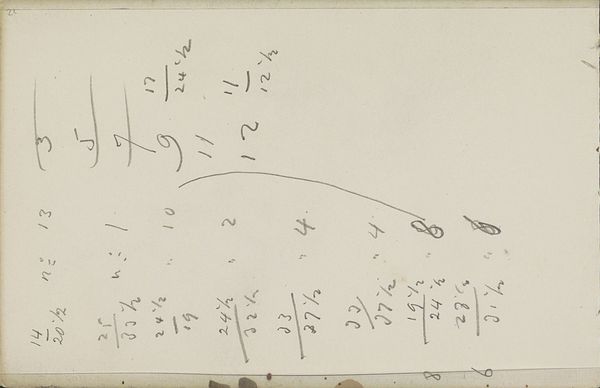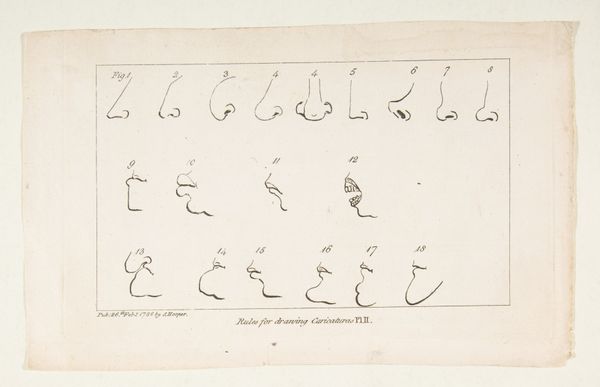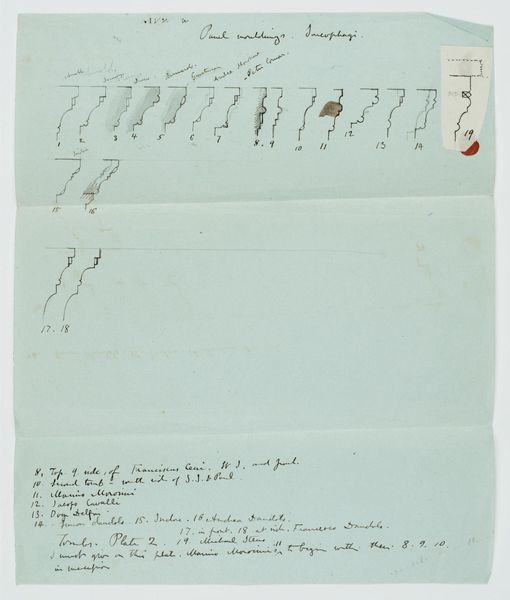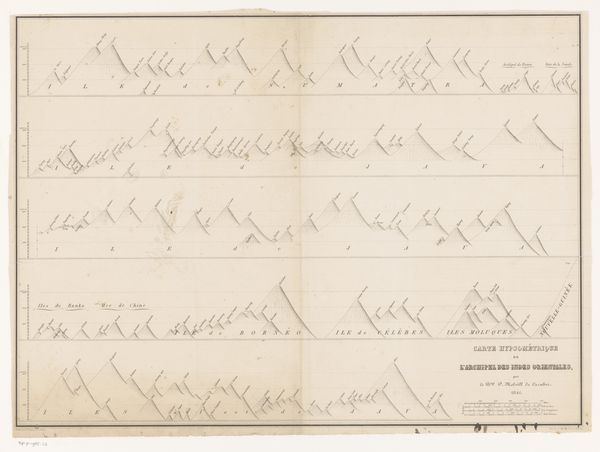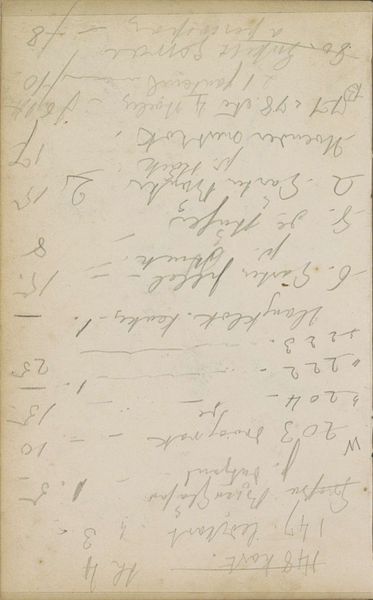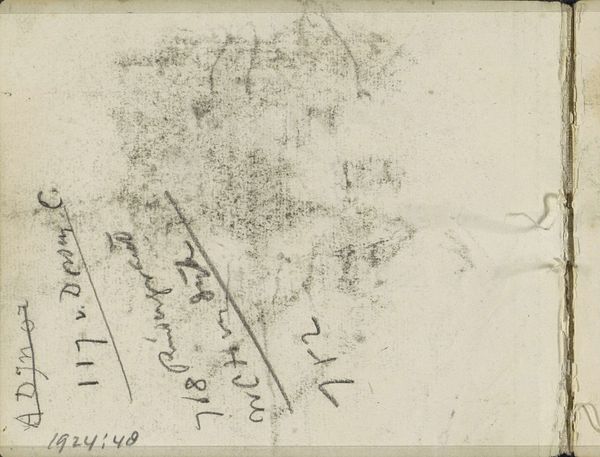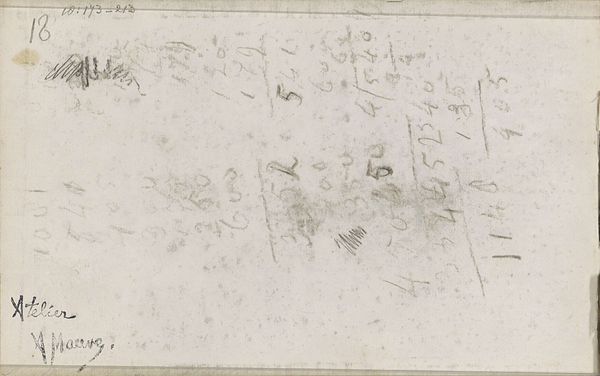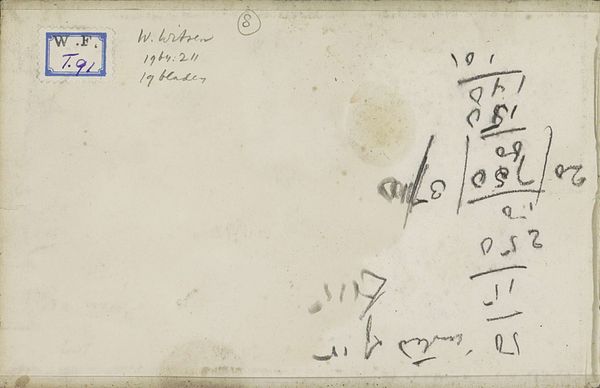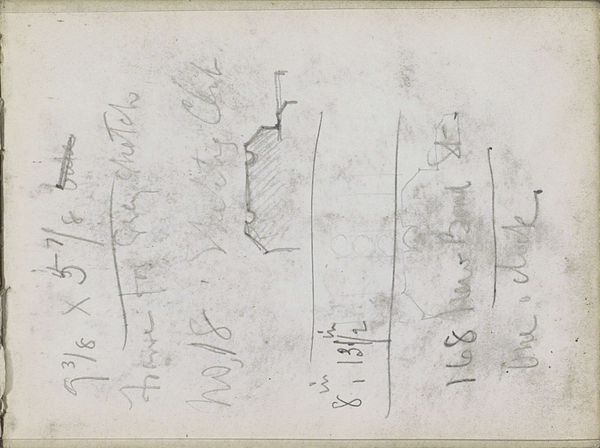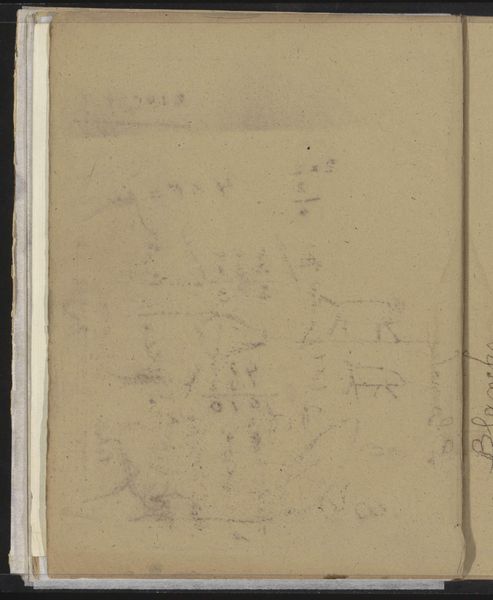
drawing, paper, ink
#
portrait
#
drawing
#
impressionism
#
paper
#
personal sketchbook
#
ink
#
abstraction
#
modernism
#
monochrome
Copyright: Rijks Museum: Open Domain
Editor: Here we have "Annotaties" by Willem Witsen, likely created between 1888 and 1891. It's an ink drawing on paper, and it looks like a page from a personal sketchbook filled with numbers and notes. What strikes me is its seeming randomness. How do you interpret this work? Curator: This isn't random at all; it’s a glimpse into Witsen's artistic process and, by extension, the creative struggles many face, especially women and artists of color who historically were denied resources. Look at it as a subversive act. How many opportunities were given to him to just explore his potential? I see him taking ownership of his space, recording, and perhaps experimenting. Does this make you reflect on institutional privilege at all? Editor: I see what you mean. The simple act of keeping a sketchbook, something we might take for granted, becomes a statement about having the freedom and resources to create. It reminds me of critiques about whose voices and perspectives are historically valued. Curator: Exactly! We need to consider that the lack of sketchbooks like this from other marginalized communities throughout the late 19th century wasn't necessarily a lack of interest. More than likely it reflects systemic barriers that kept people from equal access to paper, education, or even safety in expressing themselves. Consider, also, how Impressionism, of which Witsen was part, sought to capture fleeting moments and personal experiences. The mundane—numbers, calculations—elevated. Editor: So you’re saying this page isn’t just a collection of jottings but evidence of a very personal rebellion through mark making. It represents claiming a space. I guess I initially viewed the notes as purely practical, devoid of deeper significance. Curator: I like the phrase “personal rebellion”. Considering his relative socio-economic advantage and historical context helps us dig beneath a surface impression. Do you find yourself questioning its simplicity? Editor: Yes, absolutely. It shows how looking at art through an activist lens uncovers these hidden stories and helps us understand both the art and its socio-historical underpinnings. Curator: Indeed! Always ask 'Who gets to create and whose creations do we get to see?'
Comments
No comments
Be the first to comment and join the conversation on the ultimate creative platform.

